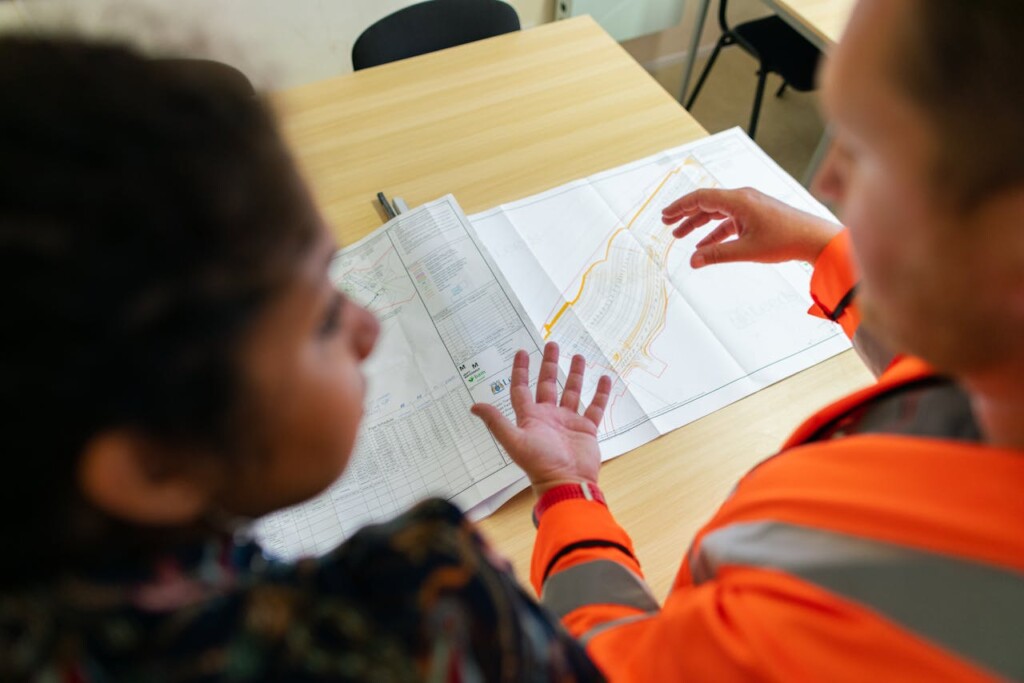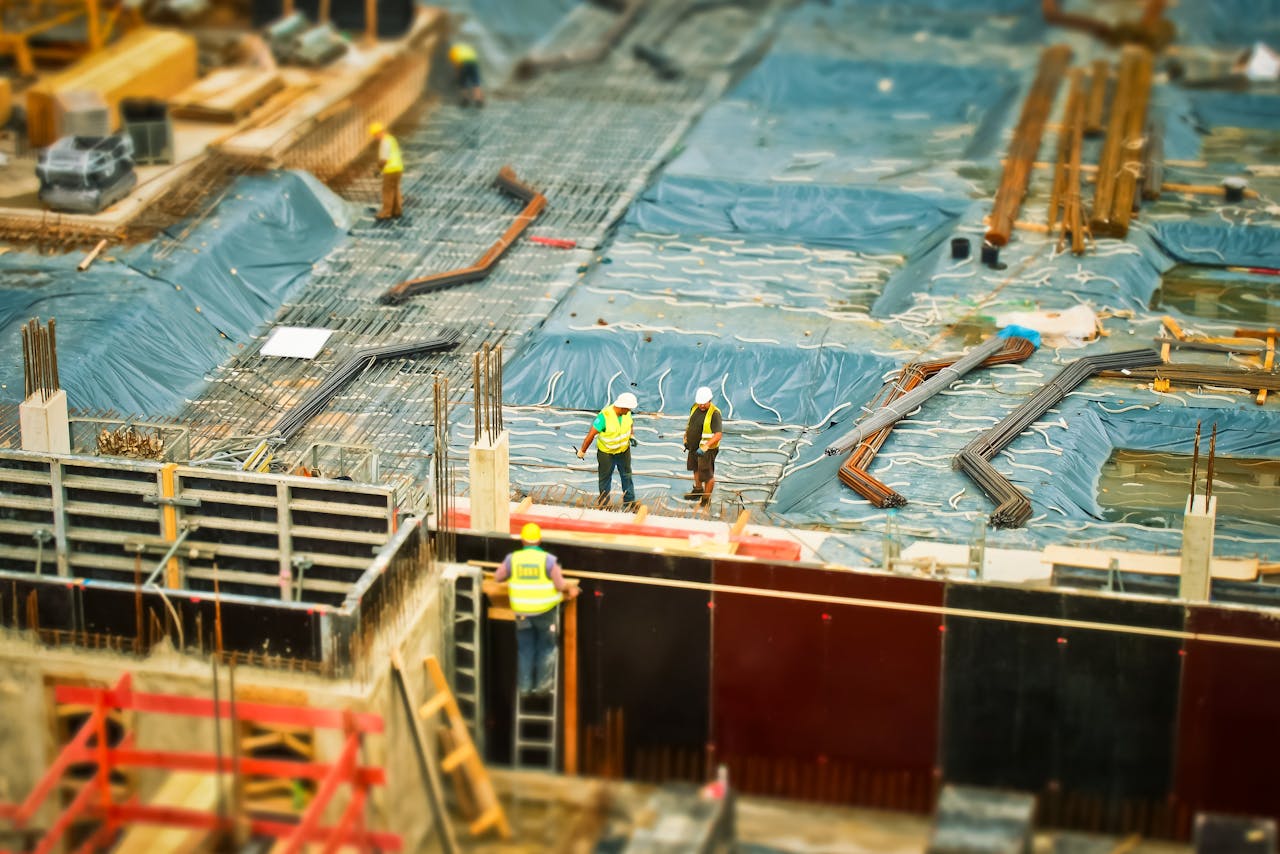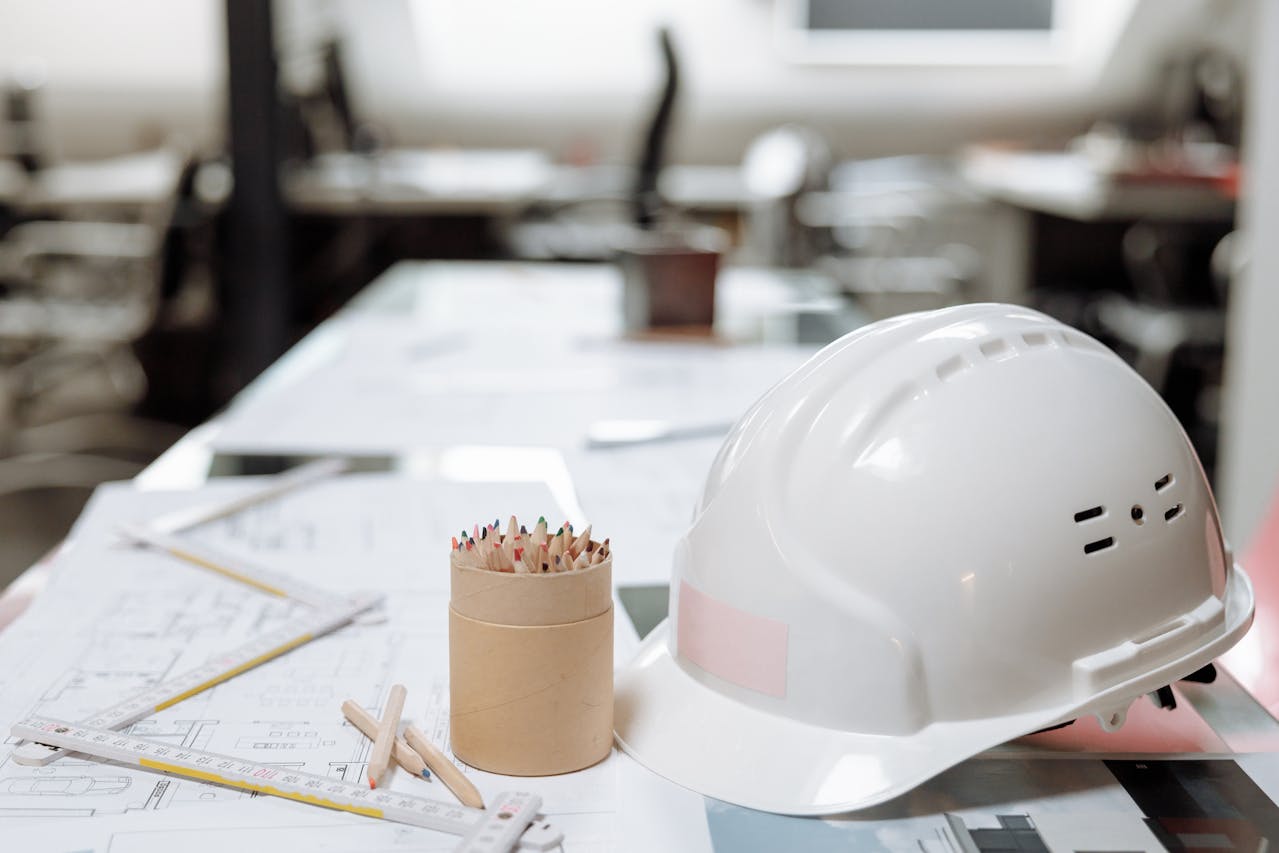Austin’s construction market presents extraordinary opportunities alongside significant financial stakes. More than 700 commercial-focused contractors compete for projects ranging from $100,000 tenant improvements to $53,000,000 complex developments.
When construction schedules hold to plan, most commercial projects require up to 18 months to complete. However, Austin’s rapid growth and tight labor market create unique pressures that make contractor selection critical for successful project delivery and cost control.
What Services And Delivery Methods Do Austin Commercial GCs Offer?

Austin commercial general contractors deliver projects through multiple service frameworks designed for different owner preferences and project complexities. We provide traditional general contracting alongside integrated approaches like design-build and construction management. Each delivery method offers distinct advantages for schedule control, cost predictability, and risk allocation.
Core Delivery Methods
Design-build combines architectural services with construction under a single contract. This method streamlines communication and accelerates project timelines by allowing construction to begin before design completion. We hold responsibility for both design quality and construction performance, creating clear accountability for project outcomes.
Construction management positions us as the owner’s representative during pre-construction while maintaining competitive bidding for trade packages. This approach provides early cost feedback and constructability input during design development. We coordinate with your design team to optimize buildability and schedule sequencing.
Traditional general contracting works from completed construction documents with fixed-price agreements. This established method provides cost certainty upfront and clear scope definition. We manage all trade coordination and material procurement according to the specified design.
Pre-Construction Services
Our pre-construction teams engage early to establish realistic budgets through detailed estimating processes. We analyze material availability and identify long-lead items that could impact project schedules. Early supplier outreach helps secure pricing and delivery commitments before construction begins.
Logistics planning addresses site access, material staging, and trade sequencing to minimize conflicts. We coordinate utility relocations, permit submissions, and temporary facilities to support construction operations. Risk mitigation strategies address weather impacts, supply chain disruptions, and regulatory changes that could affect project delivery.
Project Management And Scheduling
Critical path scheduling drives our project coordination from design through completion. We establish milestone dates for major trade activities and material deliveries. Regular schedule updates track progress against baseline targets and identify corrective actions when needed.
Value engineering reviews design elements for cost optimization without compromising performance standards. We propose alternative materials, construction methods, or system configurations that can reduce costs or accelerate schedules. These recommendations maintain design intent while improving project economics.
Budgeting processes include detailed cost breakdowns by trade and project phase. We track expenditures against approved budgets and provide regular financial reporting. Change order management ensures scope modifications receive proper documentation and approval before implementation.
Safety Management And Compliance
Safety management integrates into every project phase through comprehensive planning and ongoing training programs. We maintain OSHA certification requirements for our field personnel and subcontractors. Regular safety meetings address hazard identification and prevention strategies specific to each project.
Jobsite safety practices include personal protective equipment requirements, equipment inspection protocols, and emergency response procedures. We conduct regular safety audits and maintain incident reporting systems. Safety performance metrics track leading indicators like near-miss reports and training completion rates.
Facility Services And Maintenance
Many Austin contractors extend services beyond project completion through facility maintenance programs. We provide preventative maintenance scheduling for building systems including HVAC, electrical, and plumbing components. Regular inspections identify potential issues before they require urgent repairs.
Building maintenance services include both routine tasks and specialized repairs for concrete structures, roofing systems, and mechanical equipment. We maintain relationships with specialty subcontractors for complex system maintenance. Emergency response capabilities address urgent repairs that could impact business operations.
Facility services often include ongoing relationships for future expansions or renovations. This continuity provides advantages for understanding existing building systems and maintaining consistent quality standards across multiple projects.
Which Markets, Project Types, And Building Systems Are Common In Austin?
Austin’s diverse economy drives demand across multiple market sectors. We handle projects ranging from tech office construction to industrial manufacturing facilities, healthcare and dental practices, and energy sector infrastructure. The retail market spans traditional strip centers to specialized service facilities like car washes, hotels, self-storage, automotive centers, and aviation facilities.
Multifamily housing remains a priority given Austin’s population growth, with both market-rate and senior housing developments. Educational projects include daycares, private schools, and institutional facilities. We also work on banks, restaurants, food processing plants, warehousing and distribution centers, and church and civic buildings.
Core Project Types
New construction forms the foundation of our work, with ground-up buildings designed for long-term performance. Tenant improvements and build-outs represent significant activity as businesses relocate or expand within Austin’s competitive market. These projects require coordination with existing building systems and tight scheduling to minimize business interruption.
Renovations and remodels address changing business needs and regulatory updates. Facility expansions help growing companies add capacity without relocating. We provide ongoing facility solutions including maintenance, repairs, and system upgrades to keep properties operating efficiently.
Building System Options
Tilt-wall construction offers speed and cost efficiency for warehouses, distribution centers, and manufacturing facilities. The system works well for projects requiring large, unobstructed interior spaces with minimal structural elements. Precast concrete provides durability and design flexibility for office buildings and institutional projects.
Wood-framed construction suits smaller commercial buildings, restaurants, and office projects where traditional methods align with budget and timeline requirements. Pre-engineered metal buildings serve industrial and warehouse applications where quick assembly and cost control are priorities. Tensioned membrane fabric structures address specialized needs like aircraft hangars, sports facilities, and temporary or permanent covered areas requiring large spans without interior supports.
How Do Pre-Construction, Scheduling, And Risk Management Work In Austin?

We build Austin commercial projects by starting planning and coordination months before the first trades arrive on site. Pre-construction teams, including those at EB3 Construction, develop the project roadmap through systematic estimating, logistics coordination, and risk analysis. This early planning phase sets the foundation for smooth execution across all project phases.
Pre-Construction Planning And Early Coordination
Our pre-construction planning begins with detailed scope analysis and site assessments. We work with architects and engineers to understand design intent, evaluate site conditions, and identify potential construction challenges before they impact schedules or budgets. This collaborative approach helps align all stakeholders on project goals and delivery methods.
Estimating forms the backbone of our pre-construction process. We analyze labor requirements, material quantities, equipment needs, and subcontractor costs to develop comprehensive project budgets. These estimates account for Austin-specific factors like local labor rates, material availability, and permitting requirements that affect project feasibility.
Logistics planning addresses the practical aspects of construction execution. We coordinate material deliveries, equipment staging, site access, and workforce scheduling to minimize conflicts and delays. For Austin projects, this includes navigating traffic patterns, parking restrictions, and neighbor considerations that can impact daily operations.
Long-Lead Items And Material Management
We identify and track long-lead items during pre-construction to prevent schedule delays. These materials require extended manufacturing or shipping times and can halt progress if not ordered early. Common long-lead items in Austin commercial construction include specialized mechanical equipment, custom millwork, structural steel, and architectural materials.
Our teams maintain vendor relationships and monitor supply chain conditions to anticipate potential delays. We flag critical materials during design development and coordinate procurement schedules with the construction timeline. This proactive approach helps maintain project momentum even when supply challenges arise.
Risk mitigation strategies address both material and schedule vulnerabilities. We develop contingency plans for alternative suppliers, substitute materials, and adjusted sequencing to keep projects moving forward when primary options face delays.
Critical Path Method And Schedule Control
We use critical path scheduling to identify task sequences that directly impact project completion dates. This method helps us prioritize resources and coordinate trades around activities that cannot be delayed without affecting the overall timeline. Critical path analysis reveals which tasks have scheduling flexibility and which require strict adherence to planned dates.
Trade coordination follows the critical path structure to sequence subcontractor work efficiently. We schedule concrete, framing, mechanical, electrical, and finishing trades based on their dependencies and the critical path requirements. This systematic approach prevents conflicts and keeps all trades productive.
Milestone tracking provides regular checkpoints for measuring progress against the planned schedule. We establish key completion points for major phases like sitework, structural work, building envelope, and interior finishes. These milestones help identify potential delays early and allow for corrective action before they impact subsequent work.
Value Engineering And Budget Alignment
Value engineering helps us align project scope with available budgets without compromising performance or quality. We evaluate design alternatives, material selections, and construction methods to identify cost-effective solutions that meet project requirements. This analysis occurs during pre-construction when changes can be implemented efficiently.
Our value engineering process examines building systems, finishes, and operational features to optimize long-term value. We consider initial construction costs alongside lifecycle performance, maintenance requirements, and energy efficiency to recommend solutions that serve owner objectives.
Budget control measures track costs throughout pre-construction and construction phases. We monitor material prices, labor rates, and change order impacts to maintain financial performance within approved limits. Regular cost reporting keeps owners informed of budget status and potential adjustments.
Safety Management And Green Building Practices
Safety management integrates into every phase of our pre-construction and construction process. We develop site-specific safety plans that address hazards, establish protocols, and ensure compliance with OSHA requirements. Our teams receive ongoing training on safety practices and maintain current certifications for their trade specialties.
For owners pursuing sustainable construction, we provide LEED certification support and green building expertise. Our approach includes energy-efficient design coordination, sustainable material selection, and construction practices that minimize environmental impact. We track LEED credits throughout the project to ensure certification requirements are met.
Green building practices extend beyond LEED to include local sustainability initiatives and Austin’s environmental goals. We coordinate with utility programs for energy incentives and incorporate water conservation measures appropriate for Texas climate conditions.
What Should Owners Look For When Selecting An Austin Commercial GC?
Selecting the right commercial general contractor requires careful evaluation across multiple criteria. We focus on eight core areas that separate qualified professionals from the field of more than 700 commercial contractors operating in Austin.
Experience With Similar Projects
Look beyond years in business to examine actual project history. A contractor’s portfolio should demonstrate completed projects that match your scope, budget range, and building type. Request specific examples of similar work and verify the project outcomes with past clients.
We recommend asking for detailed case studies rather than just photo galleries. The best contractors can explain how they handled challenges specific to your project type and budget level.
Austin Building Permits And Code Navigation
Austin’s permit process varies significantly by project type and location within the city. Your contractor should demonstrate clear knowledge of local requirements and established relationships with city departments. Ask how they handle the permit process timeline and what contingencies they build in for approval delays.
Effective contractors maintain current knowledge of Austin’s zoning requirements, setback rules, and specific code adoptions that differ from state standards. This local expertise prevents costly redesigns and schedule delays.
Subcontractor Oversight And Management
Strong subcontractor management directly impacts your project quality and timeline. Inquire about their vetting process for trade partners and how they coordinate multiple teams on site. Quality contractors maintain long-term relationships with reliable subcontractors and have backup options for critical trades.
We look for contractors who can explain their subcontractor oversight methods, including how they monitor quality, schedule compliance, and safety protocols across all trades.
Customer Satisfaction And Performance Records
Request references from projects completed within the past two years. Contact these references directly to discuss communication quality, schedule adherence, and problem-solving approaches. A reputable contractor will readily provide references and showcase their portfolio of completed work.
Review any available complaint percentage data or Better Business Bureau ratings. Low complaint ratios indicate consistent professional performance and client satisfaction.
License Status And Business Hours Availability
Verify current license status through Texas state databases and confirm registration with the City of Austin if required for your project type. While Texas doesn’t require general contractor licensing for building permits, trade-specific licenses are mandatory for electrical, plumbing, and mechanical work.
Assess their business hours and availability to match your project timeline. Contractors with limited availability may not prioritize your project appropriately during critical phases.
Budget Control And Schedule Management
Request a detailed explanation of their budget tracking methods and change order processes. Professional contractors use established systems to monitor costs against approved budgets and provide regular financial reporting throughout the project.
Their critical path scheduling approach should clearly identify project milestones, trade sequencing, and contingency planning for potential delays. This systematic approach prevents cost overruns and schedule disruptions.
Safety Practices And Risk Mitigation
Evaluate their safety record, training programs, and OSHA compliance history. Strong safety practices protect your project from accidents, delays, and liability issues. Ask about their Experience Modification Rate (EMR) and recent safety performance metrics.
Risk mitigation for long-lead items requires early identification and procurement planning. Contractors should explain how they track material lead times and coordinate with suppliers to prevent delays.
Additional Services And Capabilities
Consider whether you need ongoing facility maintenance and repair capabilities beyond project completion. Many contractors offer comprehensive facility services, including preventative maintenance, urgent repairs, and building system support.
For sustainability goals, confirm their LEED experience and green building knowledge. Contractors with proven green building experience can guide material selections, energy efficiency measures, and certification processes effectively.
Conclusion And Next Steps

Your Austin commercial construction project requires deliberate preparation before engaging contractors. Define your project scope with specific deliverables, establish a realistic budget that includes contingencies, and set a target delivery timeline based on your operational needs. These foundational decisions guide every subsequent choice in contractor selection and project execution.
Begin your contractor search by shortlisting commercial general contractors in Austin, Texas who demonstrate expertise in your specific market and building system. Whether your project involves tilt-wall construction, pre-engineered metal buildings, or specialized systems like tensioned membrane structures, matching contractors to your technical requirements eliminates costly learning curves. Request comprehensive proposals that detail their delivery method approach, whether design-build, construction management, or traditional general contracting. Insist on critical path schedules that show realistic timelines and trade coordination strategies. Evaluate their value engineering capabilities and safety management protocols. If your project requires ongoing support, confirm their facility services offerings for maintenance and urgent repairs.
Ready to move forward with your Austin commercial construction project? Contact EB3 Construction to discuss your specific requirements and timeline.




